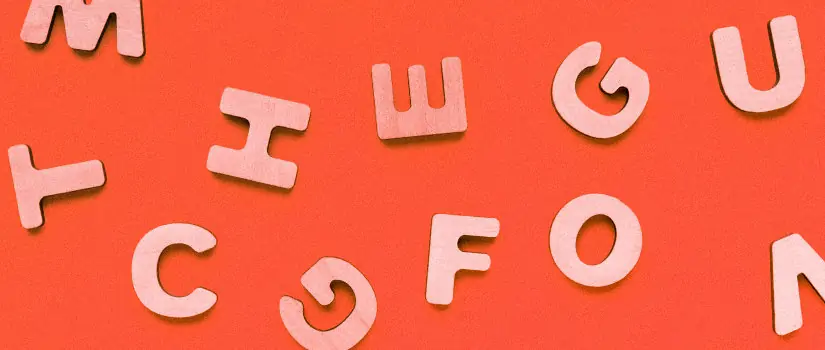
How to Bounce Back from a College Rejection
You spent months completing your college applications, and then more months waiting for a reply to the big question: did you get in? And even though you are amazing and well-deserving, sometimes the answer is going to be no.
Whether you’re dealing with your first heartbreak or have just been denied your dream school, facing rejection is never easy. College rejections can feel like a slap in the face.
Although it’s hard to rally in the wake of a denial, you can use your college rejection as an opportunity for personal growth and learning. It’s OK to take a little bit of time to wallow. After all, rejection is a tough pill to swallow! Just remember that you are not alone—most people don’t get into every college they apply to—and still end up loving the schools they end up going to.
If you’re still applying to colleges, many applications require a written essay. Why not try the BibMe Plus grammar and plagiarism checker before submitting it? Or kick your writing into high gear by mastering the usage of subordinating conjunctions, interjections, determiners, and more with our free grammar guides!
Here are smart tips for staying positive and bouncing back from a college rejection:
Consider what’s the best fit for you
Any college that doesn’t admit you probably wasn’t the right place for you to go. There are hundreds of well-regarded colleges out there. Chances are high that you’ll have a great experience at a school that does want and appreciate you! Think about the characteristics that made your top school your No. 1, and consider whether there are other schools that might have similar qualities.
Keep off your social media
One thing that can amplify feelings of rejection? Checking your Snapchat, Instagram, and other social media accounts. Oftentimes, college decisions come out on the same day, so you might find your feed flooded with posts from peers who’ve been admitted to their top choices. Seeing friends celebrate their admittance when you’ve been denied can feel lousy. So, take a social media detox for a day or two.
Explore other options
When it comes to college, there’s no end-all, be-all. Do research into other schools and get excited about someplace else—especially if it’s somewhere you’ve already been admitted. Attend an admitted students’ day at a school where you’re in to get a feel for the place. Buy a sweatshirt for that school. Research different clubs and activities there. Get used to the idea of going somewhere else that would be lucky to have you, and get excited about it!
Remember that it isn’t personal
While completing your college application is a timely process, remember that the admissions office has very little information on you. Your GPA, test scores, essay, recommendations, and resume don’t convey everything about who you are as a person. Realize that the rejection doesn’t reflect at all on your worth as a person and how awesome you’ll be at another school.
Allow time to be sad
If you feel like crying, listening to your favorite sad song on repeat, or just sulking, it’s 100 percent ok. It’s perfectly normal to feel upset or even heartbroken in the wake of a college rejection. Take some time to mourn, but also think of all the success you’ve achieved in high school. Feel proud of everything you were proud about before letter came—there are still loads of exciting opportunities that await you in college regardless of where you go, and that’s something to celebrate.
College-level writing can feel intimidating, but it doesn’t have to be. Review MLA, APA, and Chicago format citation styles at BibMe.org to help make sure your sources are cited correctly!

ACT vs. SAT: How to Know Which is Right for You
Say hello to the SAT and ACT! Both are great choices, but deciding which one to take should be a strategic decision. After all, you’ll spend weeks learning strategies and doing practice drills right until test day. So how do you pick one?
Let’s cut to the chase: the best way to decide which test is right for you is to take a practice SAT and a practice ACT. By going through the test taking experience for both, you’ll be able to make an informed decision about which suits you more. What’s great about taking practice tests is that there’s no expectation for you to get a “good” score: you’re simply seeing how the tests are formatted, what types of questions are asked, and what the pacing is like.
In addition, here are a few smart questions to consider when deciding between the ACT and the SAT:
How much time do you want to spend reading?
One big difference between the two tests is that the ACT gives you 35 minutes to do the Reading section. On the SAT, you have 65 minutes. Some would rather get it done quickly, and thus gravitate towards the ACT. Others prefer to not be in such a time crunch, which is why they take the SAT.
It’s also important to consider when you do the Reading section. On the ACT, it’s the third section (out of four multiple choice sections). On the SAT, it’s the first section. Would you prefer to tackle it at the halfway point or tackle it right away?
Worried about the essay portion of your ACT/SAT? Bulk up your English knowledge with the free BibMe grammar guides to nail down irregular verbs, prepositions, subordinating conjunctions, and more!
When it comes to math, do you prefer having a variety of question types, or do you want more algebra-based questions?
Another key difference between the ACT and the SAT is the Math section. On the ACT, the topics you’ll be tested on include pre-algebra, algebra, plane geometry, coordinate geometry, and trigonometry. On the SAT, the topics are called “Problem Solving & Data Analysis,” “Heart of Algebra,” “Passport to Advanced Math,” and “Additional Topics in Math.” It might seem hard to decode what these SAT math topics cover, but a reductive way to describe the SAT Math section is that it has more algebra and less geometry.
How do you feel about not having a calculator for a math section?
On the ACT, you can use a calculator for the whole math section. On the SAT, the Math section is split into two parts: non-calculator problems and calculator problems. Some dislike the idea of having to do math without a calculator. The problems on the SAT non-calculator Math section are designed to be done by hand, but if you prefer the security of having a calculator, the ACT Math section is completely calculator-friendly.
Would you rather have a definitive science section, or have science topics sprinkled throughout the entire test?
A big reason why many are intimidated by the ACT is the Science section. In reality, the ACT Science section is basically reading comprehension, but with graphs and tables. In contrast, the SAT weaves science throughout the entire test. For example, two of the SAT reading passages will be science-themed and contain charts. Don’t let the lack of a clear SAT “Science section” fool you—you’ll still have to deal with science.
After reviewing the above factors and taking a practice version of both tests, you will be better prepared to make an informed choice between the ACT or SAT.
College-level research papers may seem daunting, so why not brush up on the basics now? Check out the comprehensive BibMe guides to the APA, MLA, and Chicago citation styles and try the BibMe grammar and plagiarism tool to help make sure your writing is correctly cited and avoids unintentional plagiarism!

How We’re Evolving for Students
You probably know BibMe as a place to create citations with ease or check your paper for grammar and plagiarism before you hand it in. But there is so much more that the BibMe writing tools has to offer students like you. Here are some of the little-known ways that the BibMe writing tools can help take your paper to the next level!
We have an ever-growing list of citation styles
One of the most beloved features on our site BibMe.org is the ability to create citations in literally thousands of different citation styles (APA, MLA, Chicago format, etc.). While this list may seem comprehensive, we are constantly editing and adding to it. If you need a citation style for your paper that we do not currently offer, reach out to our support team with a link to the formatting guide for the style. After passing it on to the BibMe Citation Specialists for analysis, your style may be offered for use by millions of students like you! You can also influence existing citation styles by making us aware of style edits that you think should be made. Simply reach out to our support team with the details.
There’s more information on our support team later in this post.
We know a lot about citations
The guides and blog at BibMe.org offer a ton of useful information about proper citation formatting, writing, and student life. Here you can find information on everything from how to format footnotes, an example of an annotated bibliography, how to properly alphabetize your bibliography, and so much more. Feel free to check out our guides pages located here before handing in your next paper. It just might help you get a better grade!
We have grammar guides to help you build a strong writing foundation
The first step to writing well is to master the basics. That’s why we’ve built a collection of grammar guides on different parts of speech. Discover what irregular verbs are, review an adjectives list, the difference between intensive vs reflexive pronouns, learn about collective nouns, and much more!
We have a killer support team
Do you need advanced citation help? Are you having technical issues with our site? Do you have a suggestion you’d like to make for a new feature? Our support team handles questions like these every single day and would love to get you the help you need. Click the “Support” link at the top of the page, or simply go to support.bibme.org to find detailed guides for FAQs. Still can’t find what you need? Submit a question or request by going to any article and clicking “Email” in the lower right corner.
We’d love to hear from you!
More than anything, we love hearing from our users, and highly value their opinions and suggestions. We look forward to hearing from you!
...
7 Amazing African American Women
February is Black History Month—which means it’s time to reflect upon the myriad of achievements made by African American individuals. Black History Month has a storied tradition. Having originally been founded as Negro History Week in 1926 by historian Wendell G. Carter, Black History Month was first observed as we know it today in 1970 at Kent State University. In honor of the occasion, we’re taking a look at seven African American women who made outstanding achievements throughout history.
If you’re doing a paper on Black History Month, don’t forget to cite your sources with BibMe.org! Easily create APA citations, an MLA works cited, an annotated bibliography, or references in thousands of other styles.
Shirley Chisholm, congresswoman (1924-2005)
Shirley Chisholm has the distinction of being the first black woman ever elected to the U.S. Congress. Running under the slogan “Unbought and Unbossed,” Chisholm was elected from New York’s 12th Congressional district in 1968 and served in the Congress until 1983. She ran for president in 1972, becoming the first woman to seek the Democratic Party’s nomination.Ida B. Wells, journalist (1862-1931)
Known for her investigative reporting—which included documentation of illegal lynchings of black Americans—Ida B. Wells was a trailblazer both as a journalist and as an activist. Born into slavery, Wells knew the hardships faced by African Americans during her time. She advocated for women’s right to vote and for civil rights, and also helped found the NAACP.Charlotta Bass, publisher (1874-1969)
Charlotta Bass is widely considered to be the first African American woman to own and operate a newspaper, having run the California Eagle, a black-owned newspaper, after the death of editor John J. Neimore. As a publisher, Bass covered political issues impacting the African American community, such as police brutality, the KKK, and housing covenants. Bass also was the first African American woman to run for national office: She was the vice presidential candidate for the Progressive Party in 1952.Maggie Walker, banker (1864-1934)
After beginning her career as a schoolteacher, Maggie Walker in 1902 published a newspaper called the St. Luke’s Herald. Soon after, she chartered the St. Luke’s Penny Savings Bank—becoming the first African American woman to charter a bank in the U.S. In her lifetime, Walker was a strong voice in favor of women’s rights and black rights, specifically advocating for the importance of education.Cathay Williams, soldier (1842-1893)
Enlisting under the pseudonym “William Cathay,” Cathay Williams became the first African American woman to serve in the Armed Forces when she signed up for a three-year military stint in 1866. Soon after enlisting, Williams contracted smallpox, necessitating her honorary discharge from the military. She did not give up, though: She became the only woman Buffalo Soldier, serving in a legendary African American unit during the Indian War.Althea Gibson, professional athlete (1927-2003)
Althea Gibson was a gifted athlete who broke barriers in the world of tennis. As a tennis player, she became the first black woman to compete at the U.S. National Championship in 1950, following that up by becoming the first black woman to play in Wimbledon the following year. By 1959, Gibson has amassed 56 singles and doubles championships, including wins at the French Open, Wimbledon, and U.S. Open. Gibson also achieved success as a golfer.Marian Anderson, singer (1897-1993)
Considered one of the most talented singers of the 20th century, Marian Anderson made history when she sang for President Franklin Roosevelt and his wife Eleanor at the White House in 1936. She was the first African American invited to perform at the location. Among numerous accolades, Anderson was the recipient of the Presidential Medal of Freedom in 1963 and received the Grammy Award for Lifetime Achievement in 1991.Make sure your turn in you best paper with the BibMe Plus grammar and plagiarism checker. One check helps you spot and correct writing and citing issues. While you’re there, you can also read up on adjectives, pronouns, adverbs, and other parts of speech. ...

How to Spell in English: British vs American
Do you walk toward or towards your future? When discussing paint should we use color or colour? Are movies watched in a theatre or theater? Believe it or not, the answers to these questions have nothing to do with grammar and everything to do with geography.
If grammar is still on your mind, try our BibMe Plus paper checker and spot potential grammar and plagiarism issues. After that, build your knowledge with our guides on adjectives, what is a verb, what intensive and reflexive pronouns are, and other grammar topics.
Where do you pledge your allegiance?
Do you want to spell like an American or a Brit? The simple difference between all of our example words is spelling. The spelling on the left is mostly used in the United States and Canada while the spelling on the right is dominant in Britain and countries that are former British colonies. The meaning and grammatical use of the words do not change.Spelling revolution
If Americans and Brits speak the same language, why is the spelling different? The United States is a country created through revolution. The battle to separate from Britain was both physical and cultural. Noah Webster, the author of the first American dictionary and some of the first American school books, believed that English words should look more like the way they sound. This is different from British English which derives its spellings from other languages like Latin, French or Greek. Example:- American check
- British cheque
- French cheque
How to remember the difference between English and English
As we mentioned, the U.S. version of a word should look more like the way it sounds, while British English words are often longer and more complex, but there are also some easy to spot patterns between the two countries.Ize vs. Ise
The “ize” ending is typically used in America and “ise” in Britain Examples:- civilization vs. civilisation
- realize vs. realise
Nse vs. Nce
Americans most often use “nse” while Brits use “nce” Examples:- offense vs. offence
- license vs. licence
Er vs. Re
When Americans write “er” Brits go with “re” Examples:- center vs. centre
- liter vs. litre
-Or vs.-Our
Americans like to keep it short and sweet which makes the “or” vs. “our” ending easy to remember Examples:- labor vs. labour
- neighbor vs. neighbour
The Double “L”
When Americans add a suffix to the end of verbs ending in the letter “L” the single “L” is used while the Brits maintain the traditional double “L” Examples:- fueled vs. fuelled
- traveled vs. travelled
Which spelling should I use?
In order to be understood, it is best to choose the dominant spelling style of the people you are writing for. If your audience is British, you’ll write towards instead of toward. Once you choose one style over the other, stick to it. Consistency is the most important factor in a single document. Tip: Most automatic spell checks on phones and computer programs allow you to select between British or American English There are several words that changed their style when they crossed the Atlantic ocean. Now all you have to do is figure out which is your flavor or is it flavour?Create MLA citations like the ones below at BibMe.org. Need another style? Choose from APA format, Chicago style format, Harvard, and thousands of other styles.
Works Cited
Fogarty, Mignon. “Why Are British English and American English Different?” Quick and Dirty Tips, 3 July 2009,www.quickanddirtytips.com/education/grammar/why-are-british-english-and-american-english-different.
Fogarty, Mignon. “Why We Have Both ‘Color’ and ‘Colour.’” Quick and Dirty Tips, 14 Sept. 2012, www.quickanddirtytips.com/education/grammar/why-we-have-both-color-and-colour.
“Important American And British Spelling Differences You Should Know.” Spreeder, 8 June 2015, www.spreeder.com/important-american-and-british-spelling-differences-you-should-know-2/.
...
How to Incorporate Action Verbs Into Your Writing
Has a teacher ever told you to use more variety in your writing? You probably wracked your brain for a way to do this. Should you add more synonyms? Maybe you need more sentence structure variation? In fact, one great solution is to use more action verbs! Action verbs can make your writing more interesting and flow better. Let’s look at how to incorporate them into your writing.
Step up your writing game with the BibMe Plus grammar and plagiarism checker. It can help you spot potential mistakes before your teacher does. In addition, read our grammar guides to learn about adjectives that start with a, what is a conjunction, a determiner definition, and many other grammar topics.
Defining the Term
Before undertaking the task of incorporating action verbs into your writing, it’s important to understand what “action verbs” are in the first place: an action verb is a verb that specifically expresses action (such as jump, run, grab, blink), as opposed to other types of verbs, like linking or helping verbs. According to Merriam-Webster, a linking verb is “a word or expression (such as a form of be, become, feel, or seem) that links a subject with its predicate.” A helping verb is “a verb (as am, may, or will) that is used with another verb to express person, number, mood, or tense.” Therefore action verbs are verbs that help create a visual of a subject performing an action in your reader’s mind. Action verb examples include jump, search, nurture, and so on.Make a Word Bank
Before sitting down to write your first draft, it can be helpful to write up a word bank of different action verbs. This word bank can be a tool to draw on as you write so that you incorporate more action verbs into your writing from the get-go. Your word bank could contain both common and lesser-known verbs to give you a variety. Use a thesaurus if you get stuck. A word bank of action verbs could be set up in two columns like this:| Build | Emulate |
| Construct | Frame |
| Listen | Grasp |
Look at Tone
When selecting action verbs to use, consider the type of composition you’re writing. This will dictate both your tone in the piece and how you select action verbs. For example, if you are writing a formal research paper, you might employ less commonly used vocabulary words like gravitate or deliberate to help create a formal or academic tone. A word bank of verbs suitable to your tone (more sophisticated ones for a formal/academic tone, more common ones for an informal tone) might be helpful. Tip: If you have a vocabulary textbook left over from recent years in school, you might look there to identify action verbs at the level of vocabulary your tone dictates.Insert Verbs During Revision
Before sitting down to revise your use of action verbs in the first draft, take a moment to plan out the revision as a whole. When revising, be certain to consider your organization of logic or events, word choice (like action verbs!), and proofreading. To insert verbs during revision, focus on the wording step of revision (such as how you phrased each sentence and paragraph). Wording contributes to tone and how the reader perceives what you’re saying. If you have written a persuasive essay, for instance, you want to consider use of action verbs in relation to the argument, such as using verbs unique to each type of rhetorical strategy. For logos aspects of your essay (appealing to logic), look for action verbs that accompany hard facts like investigate or inspect. For aspects of an essay that appeal to emotions (pathos), make sure appropriate action verbs are attached, such as undergo or believe. The same concept applies to setting up your credibility with the reader (ethos), where you want to use action verbs that display your level of education and intelligence. Ultimately, during this revision of wording, you want to look for places where you could have used an action verb but didn’t, or could have used a stronger one. No matter what type of writing you are doing, from an essay to a creative piece, you want to display your grasp of language in a way that is unique to your style of writing. Tip: Reading out loud is helpful for all aspects of revision, such as locating awkward passages that can be ironed out with stronger, more direct wording. This is a great way to find areas where more action verbs might be placed.Use a Thesaurus
Don’t forget that you can use a thesaurus during revision! One strategy for working action verbs into your writing is to read over your work and replace verbs that were repeated a lot, or are helping or linking verbs (like seem or become). Example: If you tend to use the linking verb “to be” repeatedly (verbs like is, was, were, are, etc.), you might want to do a word search and replace some instances with action verbs. Look at this sentence:The birds were happy to fly to the next telephone line.Try replacing “were” like this:
The birds swooped happily over to the next telephone line.
Final Thoughts
Whether you’re looking to have more variety on first drafts or searching for places to slip more creative action verbs into a revision, knowing what an action verb is and how to use one is important. Happy writing and revising!Cite the sources in your next paper with BibMe.org! Choose APA format, MLA format, Chicago style format, or any one of our thousands of citation styles. ...
